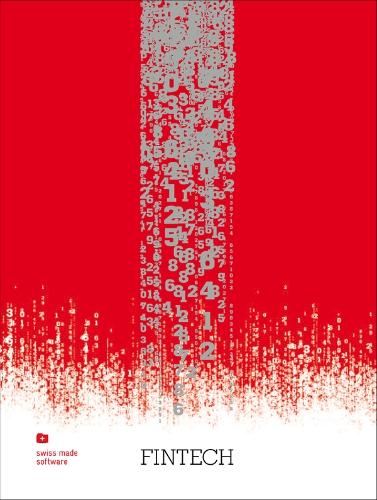Advising with transparent risks
Even banks and asset managers are feeling the pressure of digitalization. Two trends are meeting head-on: First there are robotic advisers, who simply want to replace human advisers altogether, and then there are the companies who believe in the added value of human interaction.
 Attractive risk: depicting investment risks is not enough. A modern consulting solution must also be visually attractive. (©Danil Melekhin/iStock)
Attractive risk: depicting investment risks is not enough. A modern consulting solution must also be visually attractive. (©Danil Melekhin/iStock)
Both the regulatory environment and clients’ aversion to risk have changed in response to the financial crisis. The only way to succeed in investment consulting in this situation is by using modern technology.
Three things are crucial to success: The solution must reduce the work involved through effective process management. It must automatically fulfill all compliance requirements, as well as making risks visible to both the adviser and the client. It must be attractive and dynamic. The adviser must be able to play out various scenarios and their consequences live on a computer or tablet together with the client.
In other words, the system must take the interests of the adviser, bank, and client into consideration. The software should therefore offer two perspectives: that of the adviser looking at their client base – supplying information on areas where action must be taken – and the perspective of the client – who can obtain a clear explanation of investment proposals and the associated risks right there in the meeting.
Playing with risks
This is exactly what UnRiskΩmega aims to do. The adviser is shown a selection of suitable investment strategies and model portfolios based on the client’s risk profile and investment objectives. The portfolios and strategies are based on the banks overall policies and stored in the system for use as a starting point with potential and existing clients during consulting. The adviser then adapts these while taking individual client requirements and in-house investment recommendations into consideration. Special interests such as green technology or sustainability can be set up as filters to further support this process.
The system really shows its intelligence when it produces a portfolio that balances the client’s risk profile and investment objectives. The system considers:
- whether the client has the knowledge and experience to understand the risks of investing in a specific financial instrument,
- whether the portfolio risk is within the scope of the individual risk budget, i.e. ensuring it is consistent with the client’s financial situation, and
- whether the portfolio risk is within the scope of the risk accepted under the client’s investment strategy, ensuring that the client’s investment objectives can be achieved.
Intelligent compliance. This kind of thing is indispensable today, especially when you consider the changes coming with FIDLEG and MiFID II. UnRiskΩmega already accounts for such considerations, especially where there is crossover between Swiss and European regulations. The system can be further adapted to suit additional regulations.
Should a client’s wishes be in conflict with the risk profile and/or investment strategy, the system can depict in detail where the problem lies. It then allows the adviser to adjust the weightings with the client right then and there, adding or taking away products until the configuration fits.
Automatic documentation and real-time simulation
A client is always free to accept greater risk if they so wish, provided these are within the statutory limits and there is sufficient documentation to show that the client has been informed of the risks. Once again, technology can help. UnRiskΩmega assists the bank and the adviser by documenting the decisions made. The client also receives an investment proposal after the consultation, in which all the required information is expressed in clear language, easy-to-understand for non-specialists. This can then be automatically forwarded to the bank’s archiving systems.
This reduces the liability risks for the bank, as they now have clear documentation to refer to in the event of a dispute. It clearly shows what was discussed with the client, when, and what action was taken. It protects them in respect of their own advisers, too, in the event they make suggestions that are not in line with the bank’s policies.
But the system can do even more: It even allows clients to visualize the performance of their portfolio under various conditions, as in “What would happen if…?” UnRiskΩmega contains a scenario builder. This makes it possible to predefine complex macroeconomic events, such as 9/11 or the dotcom bubble. The adviser can then demonstrate to a client how different portfolio compositions would affect the portfolio in individual crises. For example, the client can see how hedge funds generally reduce the volatility in the portfolio, but have an increased risk of default in crises. The system can calculate the effects of adjustments on the portfolio in fractions of a second, which has a noticeable effect on the character of a consultation.
UnRiskΩmega also has a positive impact on daily business outside of consultations with clients. It works overnight to calculate the effects of market movements on all portfolios. The next morning, the adviser can see any problems directly on their dashboard, where all their clients’ portfolios are shown in one place. If there are any issues, the adviser can quickly switch to individual clients, suggest proposals to adapt the portfolio, and prepare the next consultation. The system is not static, but dynamic, assuring ongoing dialogue with clients.
Modular and service-oriented standalone system
This is technically a standalone system with service-oriented architecture that can be integrated into a bank’s existing application environment. For example, the core banking system, market data provider, and investment idea platforms can be integrated via the interfaces provided. The system runs on the premises and meets the stringent security requirements of the financial industry.
To design these tools properly, it really helps to have intimate knowledge of the investment consulting processes. At multilateral, this comes from the developers’ many years of experience in banking. This expertise is complemented by a partnership with experts in mathematical solutions, MathConsult GmbH and uni software plus GmbH, which has resulted in the development of UnRiskΩmega.
multilateral is ready for the challenges posed by robotic advisers. “The robots will not make advisers obsolete,” says Matthias R. Gysi, CEO of multilateral. “Controversial statements are part of the business. But we are convinced that advisers will continue to be valued and needed by a significant portion of clients. This is where we can help.”
